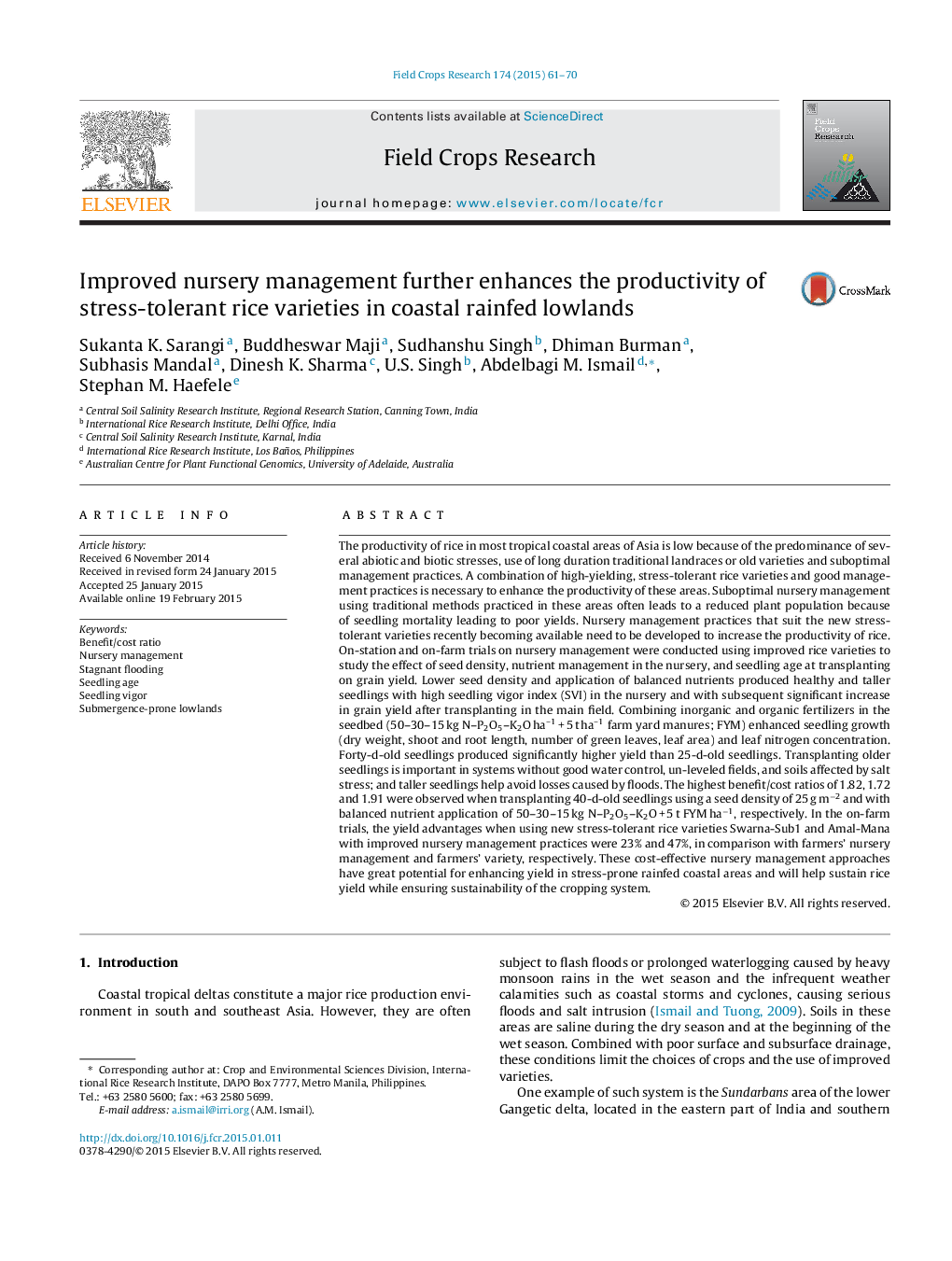| کد مقاله | کد نشریه | سال انتشار | مقاله انگلیسی | نسخه تمام متن |
|---|---|---|---|---|
| 4509923 | 1624689 | 2015 | 10 صفحه PDF | دانلود رایگان |
• Proper nursery management of new stress-tolerant varieties needs to be developed for higher productivity in stress-prone areas.
• Combining the use of older seedlings produced at wider spacing and supplied with sufficient nutrient in the nursery resulted in higher yields.
• Combining stress tolerant varieties (23%) with improved nursery management practices (47%) substantially improved grain yield and revenue compared with farmers’ nursery management and varieties.
• These cost-effective nursery management approaches have great potential for enhancing yield of the new stress tolerant varieties in stress-prone rainfed coastal areas.
The productivity of rice in most tropical coastal areas of Asia is low because of the predominance of several abiotic and biotic stresses, use of long duration traditional landraces or old varieties and suboptimal management practices. A combination of high-yielding, stress-tolerant rice varieties and good management practices is necessary to enhance the productivity of these areas. Suboptimal nursery management using traditional methods practiced in these areas often leads to a reduced plant population because of seedling mortality leading to poor yields. Nursery management practices that suit the new stress-tolerant varieties recently becoming available need to be developed to increase the productivity of rice. On-station and on-farm trials on nursery management were conducted using improved rice varieties to study the effect of seed density, nutrient management in the nursery, and seedling age at transplanting on grain yield. Lower seed density and application of balanced nutrients produced healthy and taller seedlings with high seedling vigor index (SVI) in the nursery and with subsequent significant increase in grain yield after transplanting in the main field. Combining inorganic and organic fertilizers in the seedbed (50–30–15 kg N–P2O5–K2O ha–1 + 5 t ha–1 farm yard manures; FYM) enhanced seedling growth (dry weight, shoot and root length, number of green leaves, leaf area) and leaf nitrogen concentration. Forty-d-old seedlings produced significantly higher yield than 25-d-old seedlings. Transplanting older seedlings is important in systems without good water control, un-leveled fields, and soils affected by salt stress; and taller seedlings help avoid losses caused by floods. The highest benefit/cost ratios of 1.82, 1.72 and 1.91 were observed when transplanting 40-d-old seedlings using a seed density of 25 g m−2 and with balanced nutrient application of 50–30–15 kg N–P2O5–K2O + 5 t FYM ha−1, respectively. In the on-farm trials, the yield advantages when using new stress-tolerant rice varieties Swarna-Sub1 and Amal-Mana with improved nursery management practices were 23% and 47%, in comparison with farmers’ nursery management and farmers’ variety, respectively. These cost-effective nursery management approaches have great potential for enhancing yield in stress-prone rainfed coastal areas and will help sustain rice yield while ensuring sustainability of the cropping system.
Journal: Field Crops Research - Volume 174, 15 March 2015, Pages 61–70
